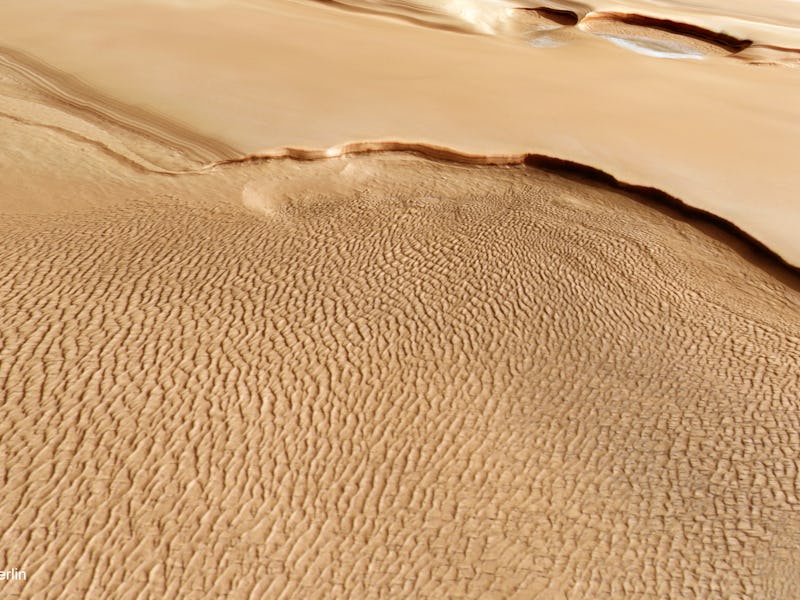Look! Mars Express Orbiter Took Photos Of Mars That Look Straight From Dune
The Red Planet is always on astronomers’ minds.

New sandy images from a spacecraft look akin to something from a terrestrial desert or a scene from the Dune film series. But what they really show is an ice-rich place on Mars.
The Red Planet is always on astronomer’s minds. Its reddish landscape occasionally blemished with ice caps and great ravines, is often photographed by a fleet of missions from the ground and the sky. They’re all trying to unpack hidden clues to answer one of science’s biggest mysteries: Are we alone in the universe, or did life sprout up on other planets?
One of the missions that’s contributed the most to answering this question is a sturdy orbiter called Mars Express, which has far outlasted expectations of living just one Martian year (roughly 1.9 Earth years) and just last December completed 20 Earth years on its mission to survey and photograph this alien terrain. One remarkable place gets special attention in new imagery.
This region lies just south of Mars’s north pole, which is just off to the right. Semi-circular cliffs flank either side of a pristine region (center) where natural processes rejuvenate the surface. A wrinkled field of sand dunes leaves a long murky feature, too (left).
The north pole of Mars is an exciting and strange place. It goes through noticeable seasonal cycles, when in the summer its frozen carbon dioxide sublimates — changes directly from a solid to a gas — and where ongoing processes somehow keep strips of land perpetually refreshed.
The creamy-toned strip that appears down the center of a new image from the European Space Agency, which manages Mars Express, shows little wear and tear because some processes are restoring the land again and again. “This smooth region lacks clear signs of erosion and has avoided being hit by incoming rocks from space — an indicator that the surface is very young, likely rejuvenating every year,” ESA officials wrote in an image description published on Wednesday.
North is on the right side of this image. What Mars Express captured in this image, taken on April 14, 2023, is the edge of a strange, gear-shaped feature. Astronomers know that this landmark, which is Mars’ northern ice cap, was “laid down like pages in a book during countless cycles of climate changes,” according to the University of Arizona. There are four distinct layers, all of which stacked on top of one another are a fingerprint of Martian history. They could hold clues about what Mars experienced over the last hundreds of thousands of years — or even longer.
“The pole itself is covered in layers and layers of fine dust and water ice; these stack several kilometers thick and stretch out for around 1000 km (approximately the width of France),” ESA officials wrote.
By learning how Mars’ water cycle changes throughout the year, and over the eons, astronomers hope to determine if the Red Planet was once hospitable enough to harbor alien life.